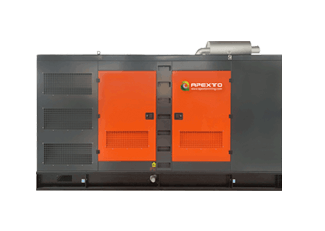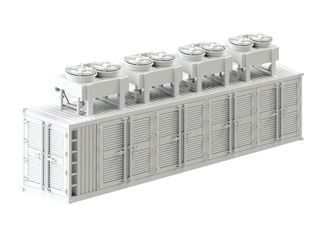LTC RATE
All CoinsWeighted average LTC rate
LTC exchange rate change
LTC characteristics
About Litecoin
What is Litecoin?
Litecoin (LTC) is a cryptocurrency designed to offer fast, low-cost, and secure payments by utilizing blockchain technology. Created by Charlie Lee, a former Google engineer, Litecoin was intended to be a "lite version of Bitcoin" with many of the same properties as Bitcoin but optimized for faster transactions.
Released as an open-source client on GitHub on October 7, 2011, Litecoin's network went live just five days later, on October 13, 2011. Since then, it has gained significant popularity, both in terms of usage and merchant acceptance, often ranking among the top ten cryptocurrencies by market capitalization.
While Litecoin was built on the Bitcoin (BTC) protocol, it differs in several key ways, including the hashing algorithm used, block transaction times, hard cap, and transaction fees. With a block time of just 2.5 minutes and extremely low transaction fees, Litecoin is particularly suited for micro-transactions and point-of-sale payments.
How does Litecoin work?
Created by Charlie Lee, a former Google employee, Litecoin (LTC) was designed as a "lite version of Bitcoin" with the goal of offering faster and more cost-effective transactions.
While Litecoin is based on the Bitcoin (BTC) protocol, it differs in several key aspects, including its hashing algorithm, block transaction time, hard cap, and more. One of Litecoin's standout features is its block time of just 2.5 minutes and extremely low transaction fees, making it ideal for real-time payments and daily use.
Litecoin was first released on GitHub as an open-source client on October 7, 2011, and the network officially went live five days later.
Pick the perfect miner from our catalog to start mining Litecoin for you!
GoHow Do You Mine Litecoin?
To mine Litecoin, you’ll need to contribute computing power to the network using specialized mining hardware. This process involves validating transactions and securing the Litecoin blockchain through a proof-of-work consensus mechanism.
Here's how to get started with Litecoin mining:
- 1. Set up a Litecoin wallet: Before you begin mining, make sure you have a Litecoin wallet to store the coins you mine.
- 2. Choose a mining pool: While it’s possible to mine Litecoin solo, joining a mining pool is often more efficient and increases your chances of earning rewards.
- 3. Install mining software: Once your mining hardware is ready, you’ll need to install the appropriate mining software to start the process.
- 4. Set up your mining hardware: Specialized mining hardware is required for efficient Litecoin mining. Ensure your hardware is specifically designed for this purpose.
- 5. Start mining: After connecting to your mining pool, contribute your computing power to the network. As you mine, you'll receive a share of the rewards for successfully mined blocks, which will be paid out to your Litecoin wallet.
FAQ
What Makes Litecoin Unique?
Litecoin, the second most popular pure cryptocurrency after Bitcoin, owes much of its success to its simplicity and clear utility. As of January 2021, Litecoin (LTC) is widely accepted, with over 2,000 merchants and stores globally now accepting it.
One of Litecoin’s main advantages is its speed and low cost. Litecoin transactions are confirmed within minutes, and transaction fees are almost negligible. This makes Litecoin an attractive alternative to Bitcoin, especially in developing countries, where high transaction fees may deter users from adopting certain cryptocurrencies.
In late 2020, Litecoin introduced the MimbleWimble (MW) testnet, designed to test confidential transactions based on the MimbleWimble protocol. Once this feature is live on the mainnet, Litecoin users will enjoy enhanced privacy and fungibility, further strengthening Litecoin’s position as a reliable and efficient cryptocurrency.
How Many Litecoin (LTC) Coins Are There in Circulation?
Litecoin (LTC) has a total maximum supply of 84 million, and as of January 2021, 66.245 million LTC have already been mined. The process of mining Litecoin follows the proof-of-work (POW) consensus mechanism, which gradually increases the circulating supply with each newly mined block. Due to the block reward halving schedule, the number of LTC mined per block decreases every four years. It’s estimated that Litecoin will take over 100 years to reach full dilution, expected around 2140.
On the first day after the LTC genesis block was mined, around 500,000 LTC were instamined. Charlie Lee and other early Litecoin developers were among the first miners. Despite this, Litecoin remains a fairly distributed asset, with no direct profits going to the developers or Charlie Lee from the operation of Litecoin, other than what they may earn through regular mining activities.
Litecoin's price history has been marked by significant fluctuations. When it first listed on several markets in 2011, the price was just $0.30. However, it saw a massive bull run from November to December 2013, peaking at $44.73. The Mt. Gox hack and the bear market of 2014 caused the price to crash, stabilizing within the $2 to $4 range for several years. In the crypto bull market of November and December 2017, Litecoin surged over 500%, reaching a high of $358.34. The price of Litecoin hit an all-time high of $386.45 in May 2021, during the latest crypto bull run.
What are some use cases for Litecoin?
Litecoin was created with the aim of being fair, decentralized, and providing ultimate utility to users, similar to its bigger counterpart, Bitcoin. Since its creation in 2011, it was designed to have:
A maximum supply of 84 million coins, safeguarding it against inflation.
Miners are rewarded with litecoins whenever a block is produced, which occurs approximately every 2.5 minutes. The initial block reward was 50 litecoins, but every 840,000 blocks (roughly every 4 years), the block reward halves. This halving will continue until the block reward reaches zero, expected by around the year 2142. Currently, the block reward stands at 12.5 coins per block, which will decrease to 6.25 coins post-halving.
Any change to these fundamental rules requires consensus approval from all Litecoin participants, including miners who support the network. This design ensures Litecoin's fair and decentralized nature while promoting long-term sustainability and stability.
How Is the Litecoin Network Secured?
Litecoin, a blockchain-based cryptocurrency, is protected by highly advanced cryptographic defenses, making it virtually impossible to crack. Similar to Bitcoin and other leading cryptocurrencies, Litecoin uses the Proof of Work (PoW) consensus algorithm to process transactions efficiently and accurately. This system ensures fast transaction confirmations without errors or delays, maintaining a smooth and reliable user experience.
The immense strength of the Litecoin mining network plays a crucial role in securing the entire network. By preventing double-spends and defending against various potential attacks, the network remains secure and robust. These measures work together to ensure 100% uptime, providing a dependable platform for users globally.

 ඒකල පතල් කම්කරුවා
ඒකල පතල් කම්කරුවා
 බිට්කොයින්
බිට්කොයින්
 ඩොග්කොයින්
ඩොග්කොයින්
 අලියෝ
අලියෝ
 කැස්පා
කැස්පා
 ඇල්ෆ්
ඇල්ෆ්
 නෙක්සා
නෙක්සා
 ඊටීසී
ඊටීසී
 සී.කේ.බී.
සී.කේ.බී.
 ඩෑෂ්
ඩෑෂ්
 කඩේනා
කඩේනා














































